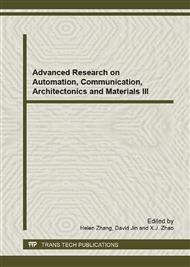p.83
p.87
p.92
p.97
p.103
p.109
p.113
p.117
p.121
Parameters Setting Impact Analysis of Composite Cockpit Finite Element Analysis Based on Properties of Composite Materials
Abstract:
At present, mechanics properties of composite at home and abroad only include data of the single-layer board. On the basis of researching literature of composite finite element analysis, approaches of setting composite three-dimensional parameters based on the parameters of single-layer material are summarized. By three-dimensional finite element analysis on composite whole cockpit, the impact of uncertain parameters on cockpit analysis results is studied. Adopting maximum stress criteria, maximum strain criteria and Tsai-Wu criteria to evaluate the initial failure of composite whole cockpit, the impact of material uncertain parameters on initial breaking strength prediction of cockpit is studied. The study can provide reference for three-dimensional finite element analysis of composite whole cockpit.
Info:
Periodical:
Pages:
103-106
Citation:
Online since:
August 2013
Authors:
Price:
Сopyright:
© 2013 Trans Tech Publications Ltd. All Rights Reserved
Share:
Citation:


